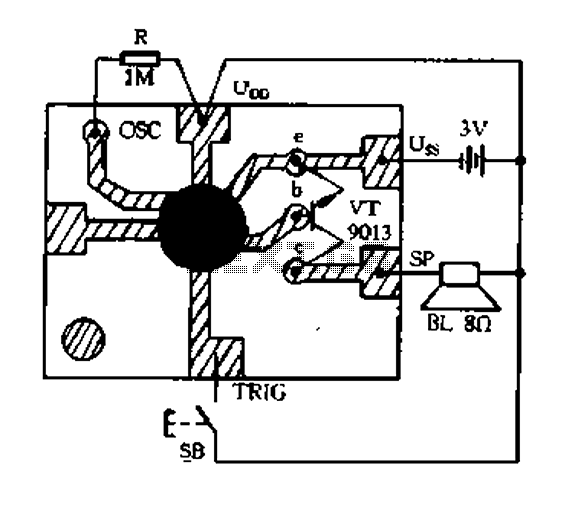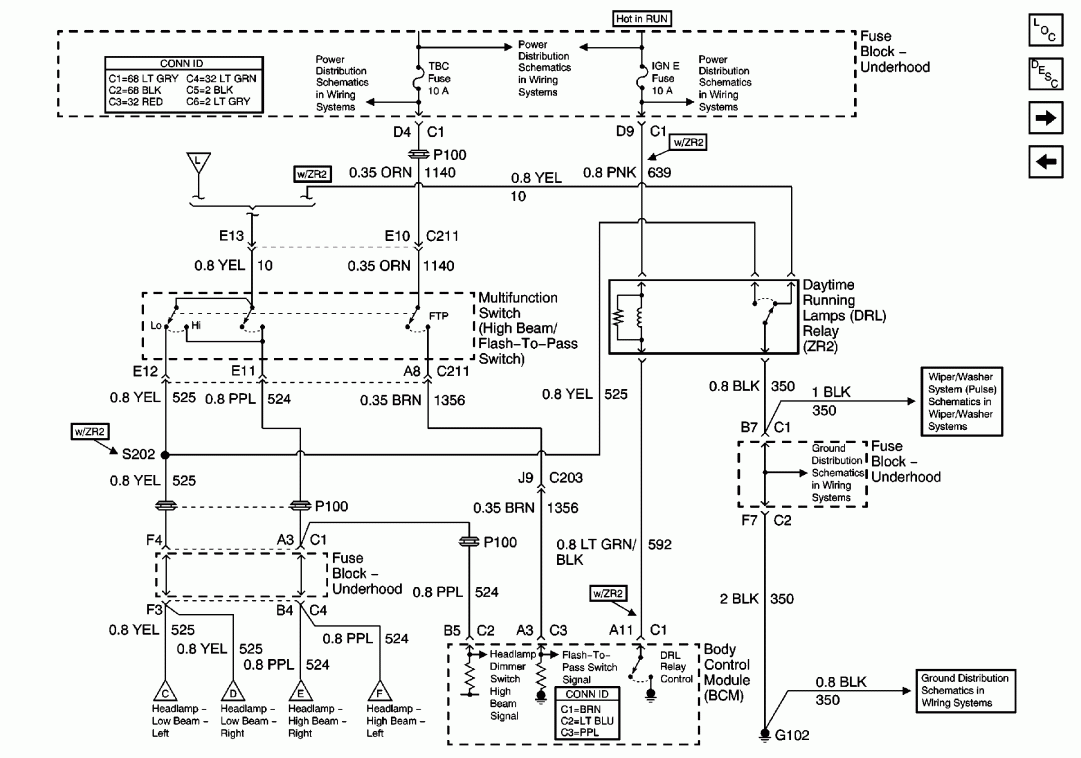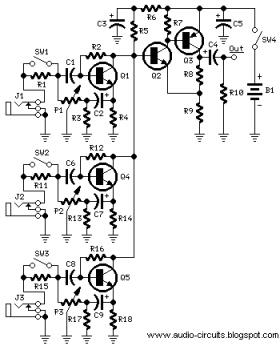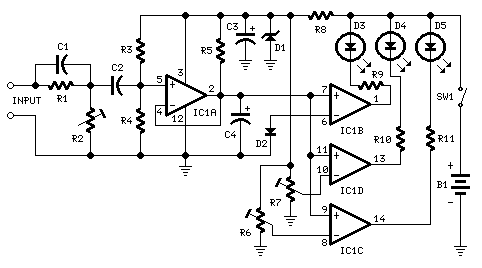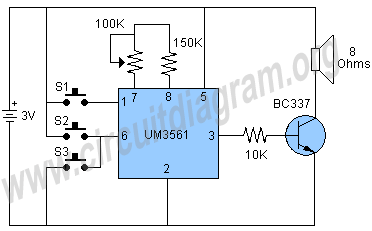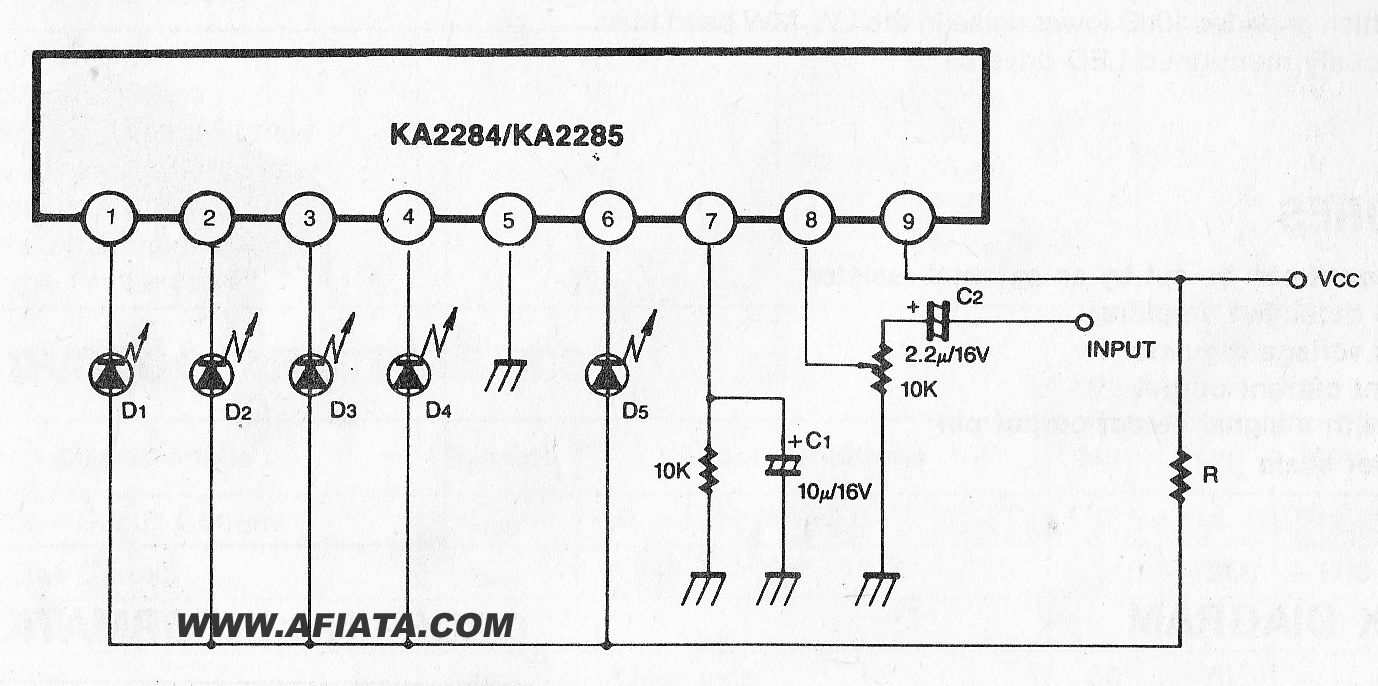
Sound Level Indicator LM3915
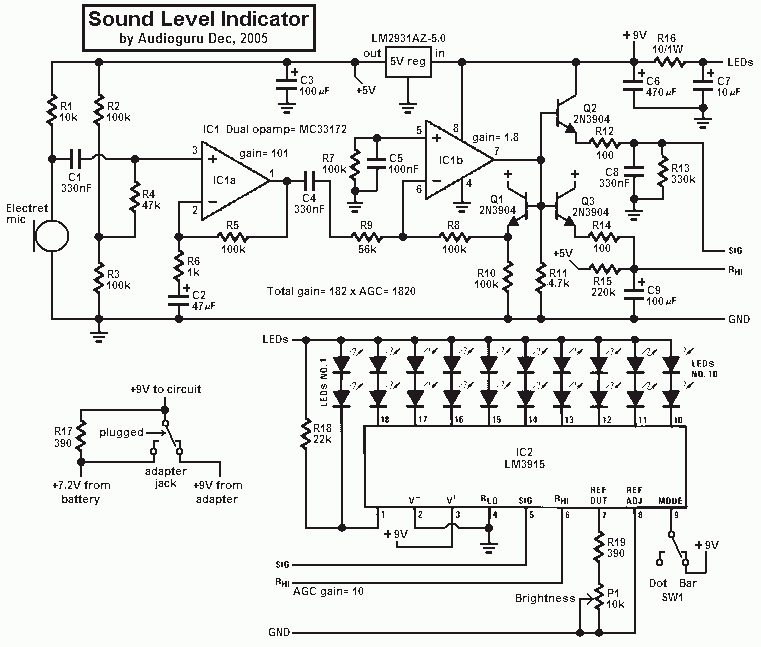
This project uses an LM3915 bar-graph IC driving two sets of ten LEDs for a 30dB range. The circuit is unique because it has an additional range of 20dB provided by an automatic gain control to allow it to be very sensitive to low sound levels but it increases its range 20dB for loud sounds. The LEDs are operating at 26mA each with the brightness control at maximum, which is very bright. The circuit has a switch to select the modes of operation: a moving dot of light, or a bar with a changing length. My prototype has a little 9V Ni-Cad rechargeable battery in it to be portable and the battery is trickle-charged when the project is powered by a 9V AC-DC adapter. 1) The electret microphone is powered by and has a load of R1 from an LM2931 5V low-dropout.
This circuit design employs the LM3915 integrated circuit, which is specifically tailored for visual sound level indication through a bar-graph or dot display. The configuration utilizes two sets of ten LEDs, allowing for a comprehensive representation of sound levels across a 30dB range. An innovative feature of this design is the incorporation of an automatic gain control (AGC) mechanism, which extends the effective range of the circuit by an additional 20dB. This AGC function enhances sensitivity to quieter sound levels while also accommodating louder sounds without distortion, thereby improving the overall dynamic range of the system.
In terms of LED operation, each LED is driven at a current of 26mA, resulting in high brightness, particularly with the brightness control set to maximum. This ensures that the visual output is clear and easily observable in various lighting conditions. The circuit includes a mode selection switch that allows the user to toggle between two operational modes: a moving dot mode, which provides a dynamic visual representation of sound levels, and a bar mode, where the length of the illuminated bar corresponds to the intensity of the sound.
Powering the prototype is a 9V Ni-Cad rechargeable battery, which facilitates portability and ease of use in various environments. The charging circuitry is designed to trickle charge the battery when the circuit is powered by an external 9V AC-DC adapter, ensuring that the device remains operational without the need for frequent battery replacements.
The electret microphone, which serves as the sound input for the circuit, is powered by a regulated voltage from an LM2931 low-dropout voltage regulator, ensuring consistent performance even with varying input voltages. A resistor (R1) is connected to the microphone to provide the necessary load, allowing for optimal signal capture and processing. This thoughtful integration of components contributes to the reliability and functionality of the sound level indicator circuit.This project uses an LM3915 bar-graph IC driving two sets of ten LEDs for a 30dB range. The circuit is unique because it has an additional range of 20dB provided by an automatic gain control to allow it to be very sensitive to low sound levels but it increases its range 20dB for loud sounds. The LEDs are operating at 26mA each with the brightness control at maximum, which is very bright. The circuit has a switch to select the modes of operation: a moving dot of light, or a bar with a changing length.
My prototype has a little 9V Ni-Cad rechargeable battery in it to be portable and the battery is trickle-charged when the project is powered by a 9V AC-DC adapter. 1) The electret microphone is powered by and has a load of R1 from an LM2931 5V low-dropou 🔗 External reference
This circuit design employs the LM3915 integrated circuit, which is specifically tailored for visual sound level indication through a bar-graph or dot display. The configuration utilizes two sets of ten LEDs, allowing for a comprehensive representation of sound levels across a 30dB range. An innovative feature of this design is the incorporation of an automatic gain control (AGC) mechanism, which extends the effective range of the circuit by an additional 20dB. This AGC function enhances sensitivity to quieter sound levels while also accommodating louder sounds without distortion, thereby improving the overall dynamic range of the system.
In terms of LED operation, each LED is driven at a current of 26mA, resulting in high brightness, particularly with the brightness control set to maximum. This ensures that the visual output is clear and easily observable in various lighting conditions. The circuit includes a mode selection switch that allows the user to toggle between two operational modes: a moving dot mode, which provides a dynamic visual representation of sound levels, and a bar mode, where the length of the illuminated bar corresponds to the intensity of the sound.
Powering the prototype is a 9V Ni-Cad rechargeable battery, which facilitates portability and ease of use in various environments. The charging circuitry is designed to trickle charge the battery when the circuit is powered by an external 9V AC-DC adapter, ensuring that the device remains operational without the need for frequent battery replacements.
The electret microphone, which serves as the sound input for the circuit, is powered by a regulated voltage from an LM2931 low-dropout voltage regulator, ensuring consistent performance even with varying input voltages. A resistor (R1) is connected to the microphone to provide the necessary load, allowing for optimal signal capture and processing. This thoughtful integration of components contributes to the reliability and functionality of the sound level indicator circuit.This project uses an LM3915 bar-graph IC driving two sets of ten LEDs for a 30dB range. The circuit is unique because it has an additional range of 20dB provided by an automatic gain control to allow it to be very sensitive to low sound levels but it increases its range 20dB for loud sounds. The LEDs are operating at 26mA each with the brightness control at maximum, which is very bright. The circuit has a switch to select the modes of operation: a moving dot of light, or a bar with a changing length.
My prototype has a little 9V Ni-Cad rechargeable battery in it to be portable and the battery is trickle-charged when the project is powered by a 9V AC-DC adapter. 1) The electret microphone is powered by and has a load of R1 from an LM2931 5V low-dropou 🔗 External reference
